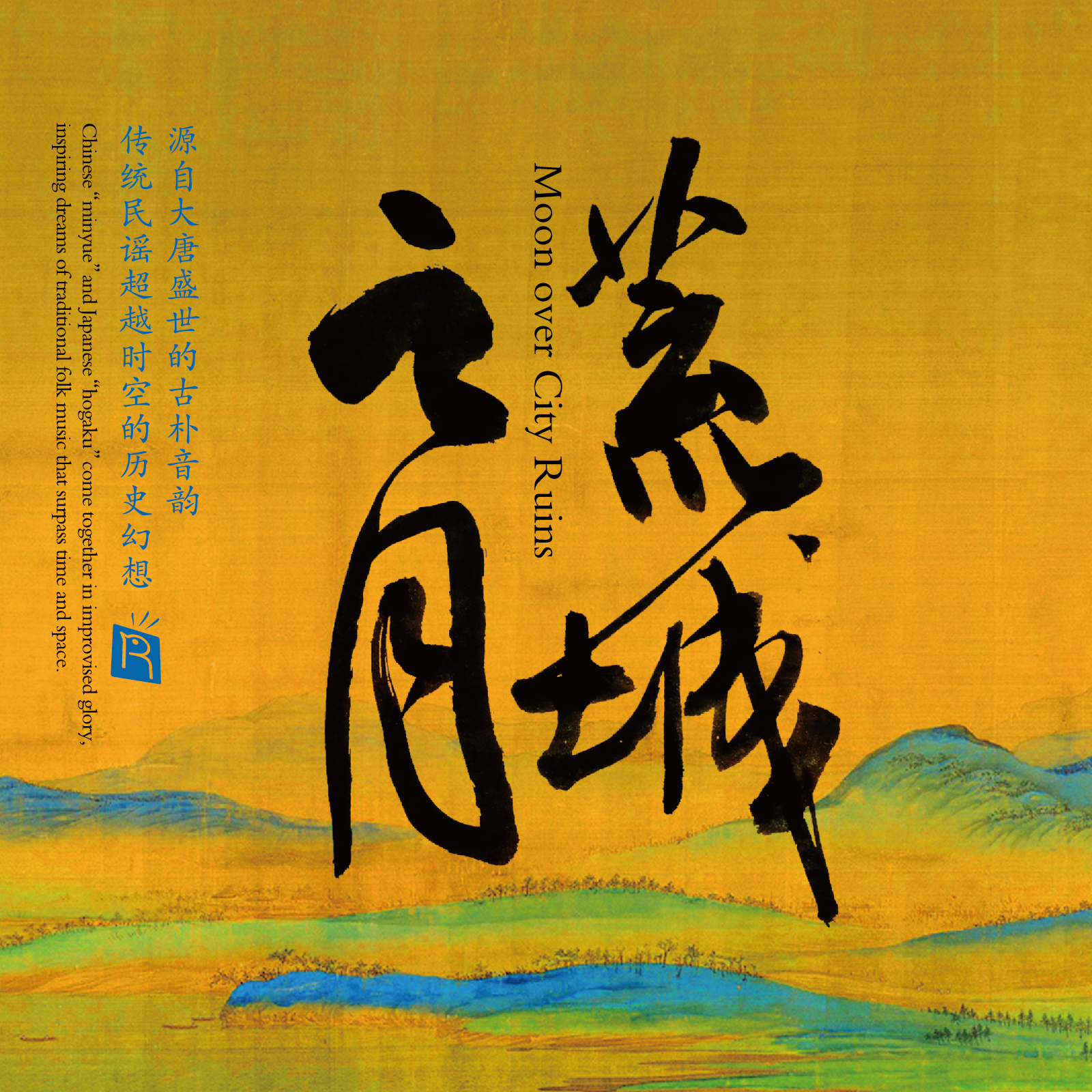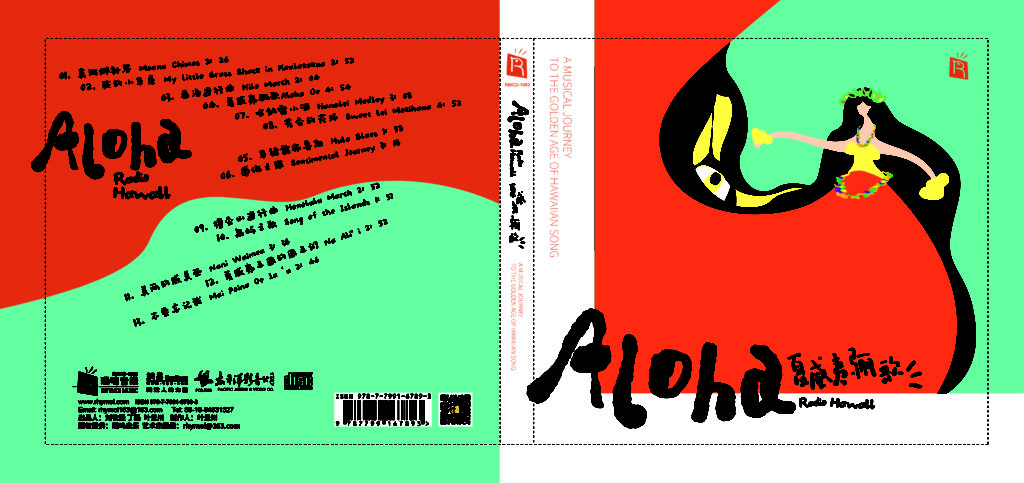
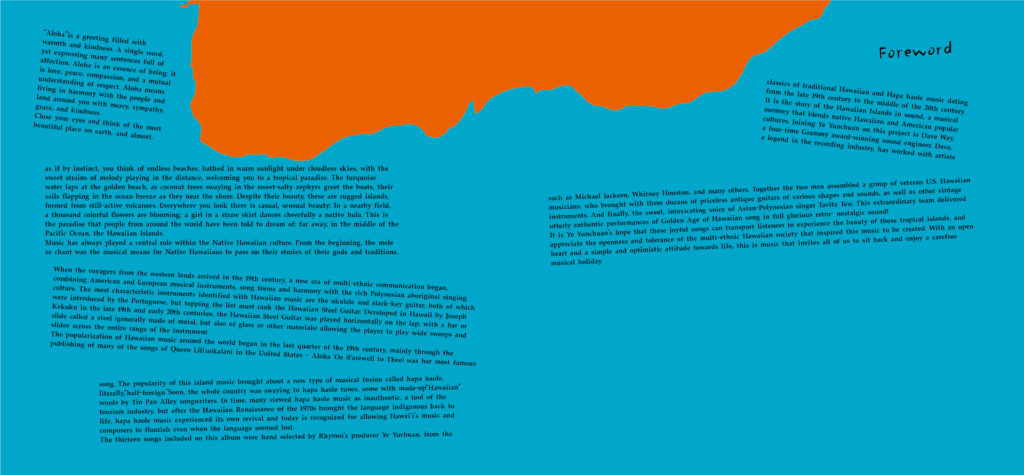
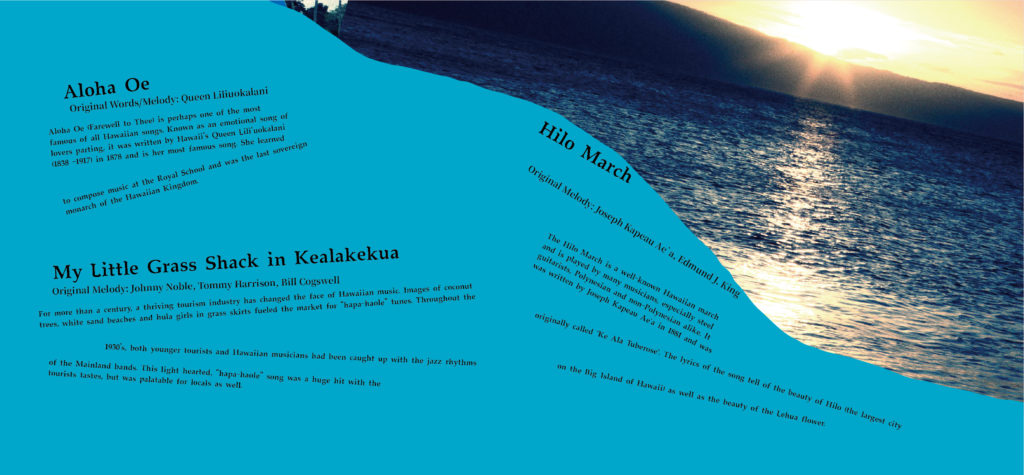
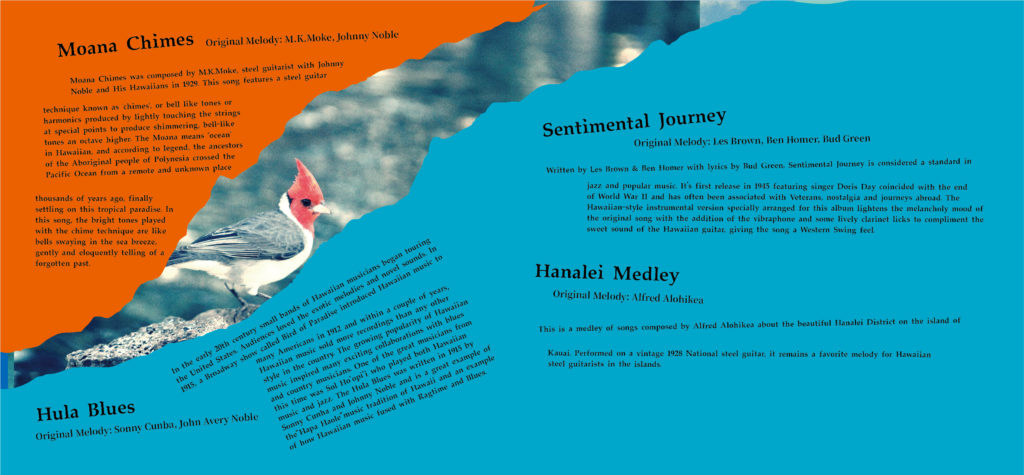
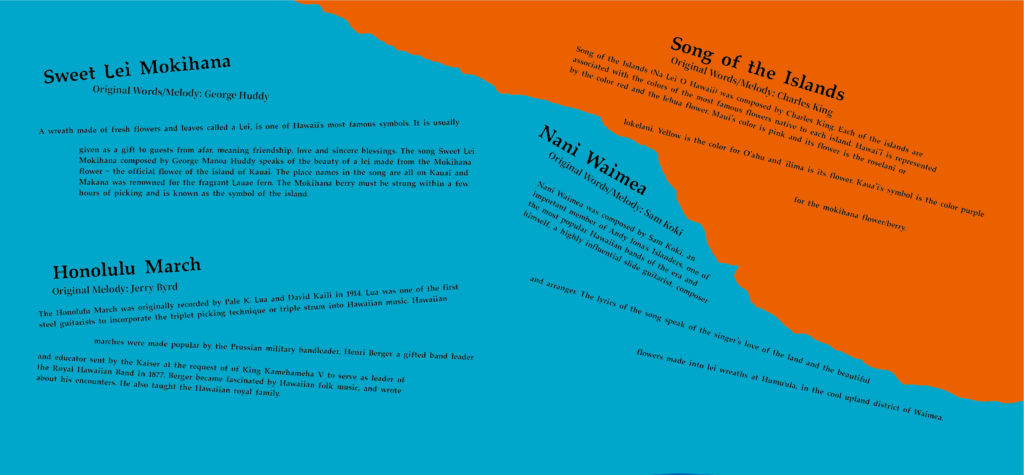
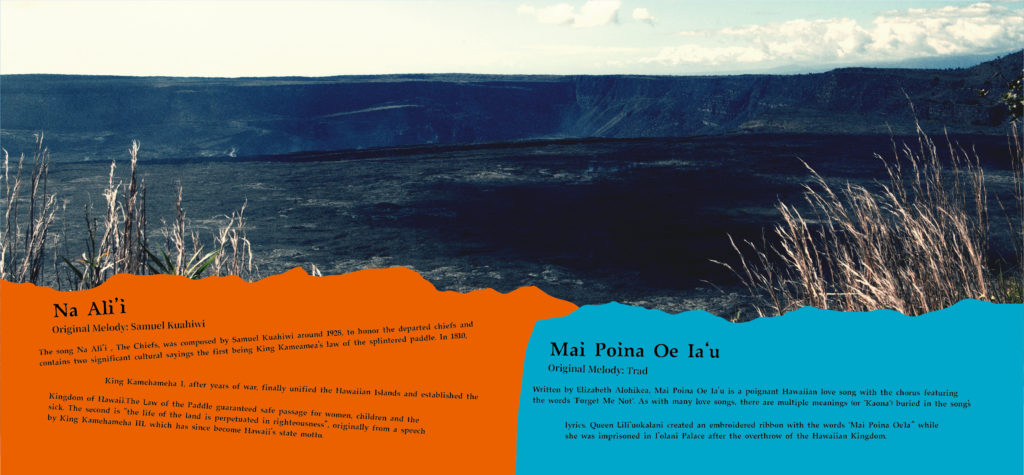
A Musical Journey to the Golden Age of Hawaiian Song
ALOHA RADIO HAWAII
夏威夷骊歌
侧耳倾听 由海洋和群山所孕育的悠扬歌谣
与椰林沙滩相伴 享受一段无忧无虑的音乐假期
Aloha, or as we would say in China “阿罗哈”, is a greeting filled with warmth and kindness. A single word, yet expressing many sentences full of affection. Aloha is an essence of being: it is love, peace, compassion, and a mutual understanding of respect. Aloha means living in harmony with the people and land around you with mercy, sympathy, grace, and kindness.
Close your eyes and think of the most beautiful place on earth, and almost, as if by instinct, you think of endless beaches, bathed in warm sunlight under cloudless skies, with the sweet strains of melody playing in the distance, welcoming you to a tropical paradise. The turquoise water laps at the golden beach, as coconut trees swaying in the sweet-salty zephyrs greet the boats, their sails flapping in the ocean breeze as they near the shore. Despite their beauty, these are rugged islands, formed from still-active volcanoes. Everywhere you look there is casual, sensual beauty: In a nearby field, a thousand colorful flowers are blooming; a girl in a straw skirt dances cheerfully a native hula. This is the paradise that people from around the world have been told to dream of: far away, in the middle of the Pacific Ocean, the Hawaiian Islands.
Music has always played a central role within the Native Hawaiian culture. From the beginning, the mele or chant was the musical means for Native Hawaiians to pass on their stories of their gods and traditions. When the voyagers from the western lands arrived in the 19th century, a new era of multi-ethnic communication began, combining American and European musical instruments, song forms and harmony with the rich Polynesian aboriginal singing culture. The most characteristic instruments identified with Hawaiian music are the ukulele and slack-key guitar, both of which were introduced by the Portuguese, but topping the list must rank the Hawaiian Steel Guitar. Developed in Hawaii by Joseph Kekuku in the late 19th and early 20th centuries, the Hawaiian Steel Guitar was played horizontally on the lap, with a bar or slide called a steel (generally made of metal, but also of glass or other materials) allowing the player to play wide sweeps and slides across the entire range of the instrument.
The popularization of Hawaiian music around the world began in the last quarter of the 19th century, mainly through the publishing of many of the songs of Queen Liliʻuokalani in the United States – Aloha ʻOe (Farewell to Thee) was her most famous song. The popularity of this island music brought about a new type of musical fusion called hapa haole, literally, “half-foreign.” Soon, the whole country was swaying to hapa haole tunes, some with made-up “Hawaiian” words by Tin Pan Alley songwriters. In time, many viewed hapa haole music as inauthentic, a tool of the tourism industry, but after the Hawaiian Renaissance of the 1970s brought the language indigenous back to life, hapa haole music experienced its own revival and today is recognized for allowing Hawai‘i’s music and composers to flourish even when the language seemed lost.
The thirteen songs included on this album were hand selected by Rhymoi’s producer Ye Yuchuan, from the classics of traditional Hawaiian and Hapa haole music dating from the late 19th century to the middle of the 20th century. It is the story of the Hawaiian Islands in sound, a musical memory that blends native Hawaiian and American popular cultures. Joining Ye Yunchuan on this project is Dave Way, a four-time Grammy award-winning sound engineer. Dave, a legend in the recording industry, has worked with artists such as Michael Jackson, Whitney Houston, and many others. Together the two men assembled a group of veteran U.S. Hawaiian musicians, who brought with them dozens of priceless antique guitars of various shapes and sounds, as well as other vintage instruments. And finally, the sweet, intoxicating voice of Asian-Polynesian singer Tavita Te’o. This extraordinary team delivered utterly authentic performances of Golden Age of Hawaiian song in full glorious retro- nostalgic sound!
It is Ye Yunchuan’s hope that these joyful songs can transport listeners to experience the beauty of these tropical islands, and appreciate the openness and tolerance of the multi-ethnic Hawaiian society that inspired this music to be created. With an open heart and a simple and optimistic attitude towards life, this is music that invites all of us to sit back and enjoy a carefree musical holiday.
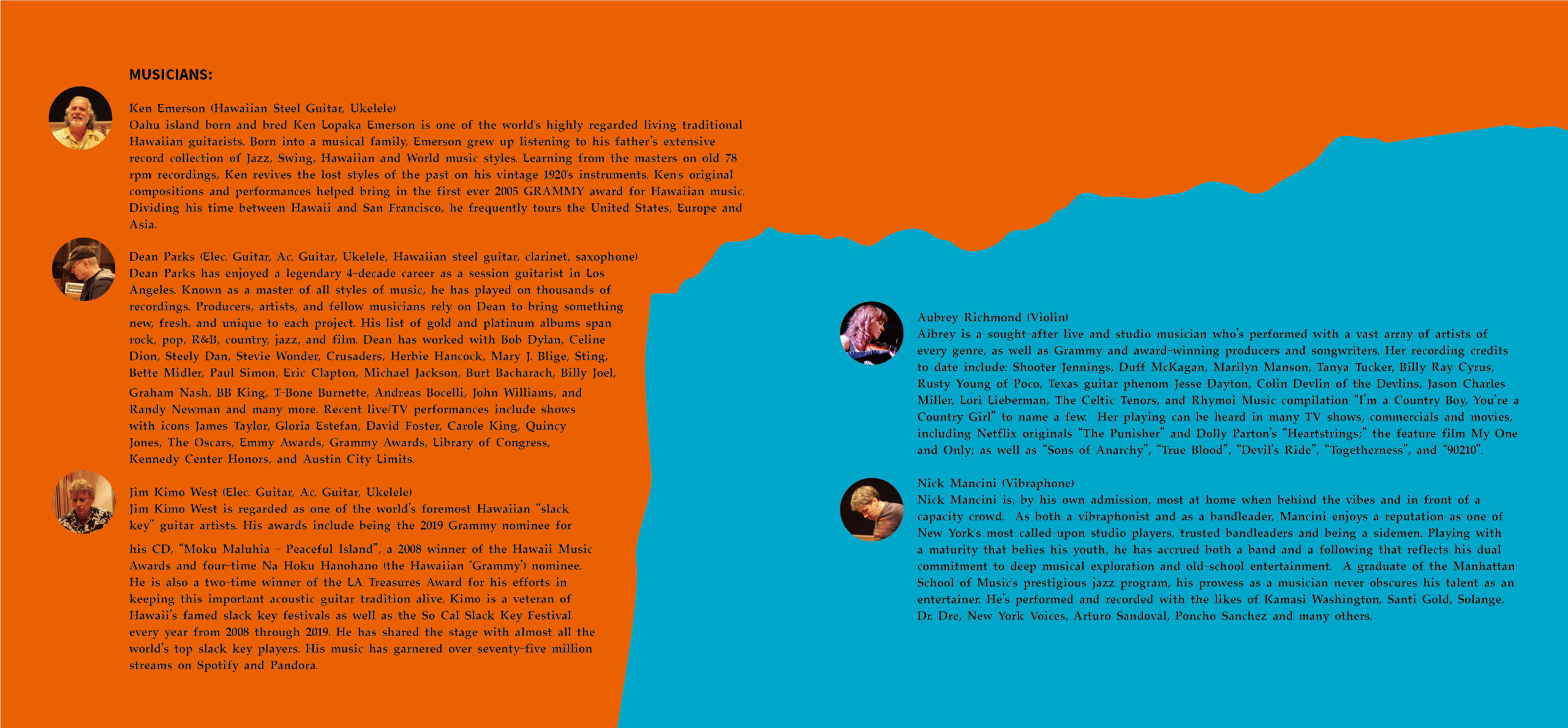

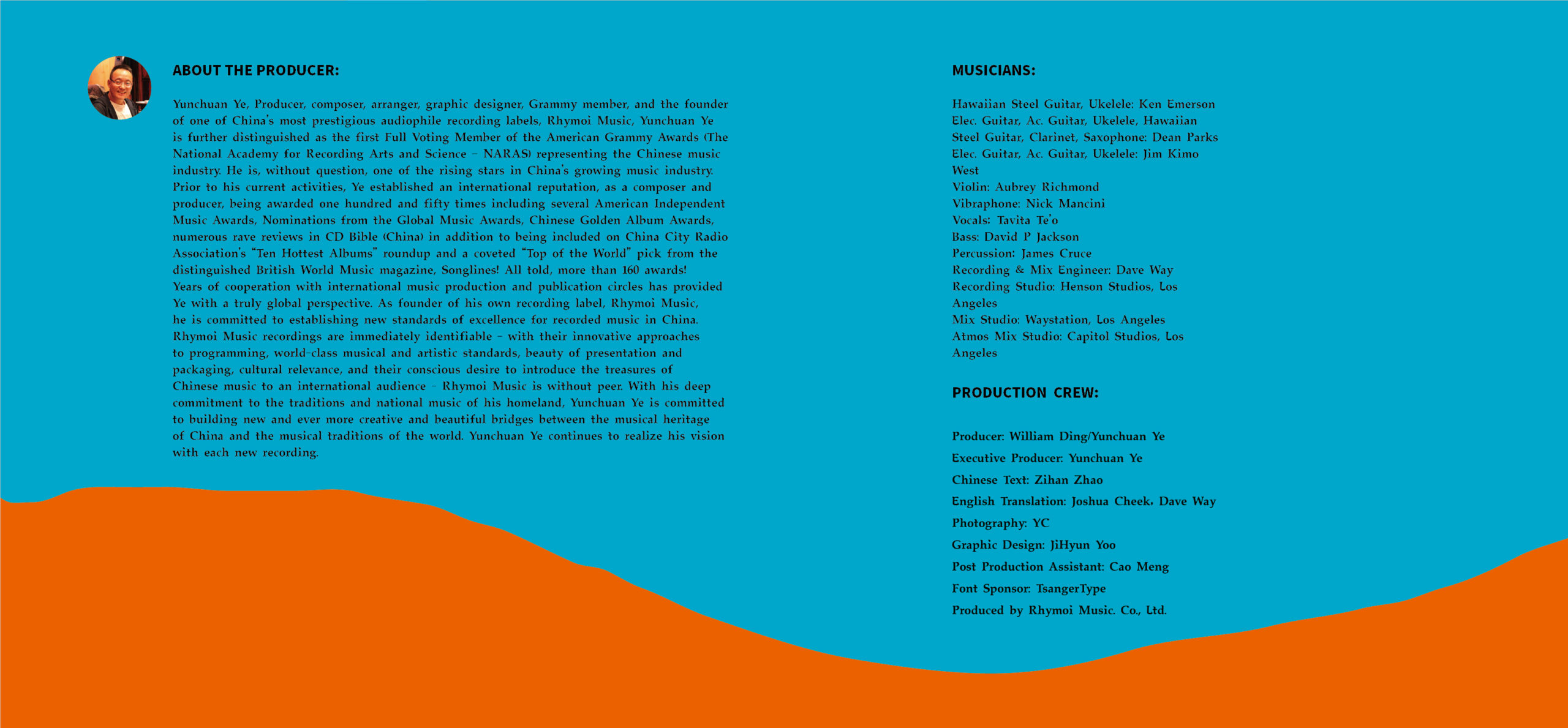
Aloha,中文写作“阿罗哈”。一声洋溢着热情善意,令人心旷神怡的问候。一句满载浓情,使人缠绵悱恻的道别。温暖而悠长的语韵,如同一串质朴动人的乐音,将人带入热带岛屿的瑰丽风景中。碧绿的海水,环抱着金黄的沙滩。暖风中摇曳的椰树,迎接即将靠岸的帆船。崎岖起伏的火山中,炽热的岩浆仍在翻滚燃烧。炫彩花朵绽放的原野上,身着草裙的少女跳着欢快奔放的舞蹈。这就是令世人心向往之的甜蜜天堂,坐落在太平洋中心的夏威夷群岛。
银色的浪花,拍击堤岸旁的礁岩,歌颂海洋的传奇。绮丽的飞鸟,越过青翠的群山,啼唱土地的悠远记忆。当来自西方大陆的远航者,在这处世外桃源中,开启多民族交流的新时代,源于美国本土和欧洲的乐器及和声风格,与波利尼西亚原住民吟唱文化的结合,最终孕育出洋溢着快乐柔情的夏威夷传统音乐。由清凉质朴的吉他弦音,和充满活力的打击乐所演绎的悠扬曲调,搭配舒缓惬意的歌声,和温暖纯真的笑容,让驻足聆听的旅人,体会到难忘的感动。随着这种热情而浪漫的歌谣,在美国本土激荡热潮,热爱夏威夷风情的音乐人们,又创造了隐含着种族文化融和之意的Hapa Haole音乐。在不同时代加入的流行乐元素,则让Hapa Haole闪烁着彩虹般的色泽,将夏威夷音乐的迷人情调传遍了整个世界。
本专辑所收录的十三首乐曲,便是从传统夏威夷音乐和Hapa haole音乐的经典曲目中精选而成,其创作时间大约自十九世纪晚期,延续至二十世纪中叶,讲述了夏威夷群岛与美国本土文化交融的音乐记忆。瑞鸣音乐制作人叶云川与音乐总监Dave Way,希望将这些愉悦明快的乐歌,如同芬芳四溢的美丽花环般献上,令聆听者能够在领略热带岛屿风光的同时,也感受到多族裔共居的夏威夷人开放包容的胸怀,以及朴素乐观的生活态度,享受一段无忧无虑的音乐假期。
制作人叶云川和曾经四次获得格莱美奖的录音师Dave Way,在洛杉矶由世界影坛巨星查理.卓别林创立,曾经为迈克尔·杰克逊、惠特尼·休斯顿等国际歌坛巨星录音的传奇工作室中,共同完成了专辑的录制工作。一群美国老牌夏威夷音乐乐手,凭借着形态、音色各异的十几把古董吉他,以及其他伴奏乐器,配合着波利尼西亚裔歌唱家Tavita Te’o浓情醇厚的嗓音,以新颖而精湛的演奏技巧,呈现出充满复古怀旧氛围的夏威夷金曲。曲调活泼俏皮的《国王们》,致敬夏威夷群岛古老而悠远的历史。由钢弦吉他演绎的《檀香山进行曲》,展示着这座商业中心城市在20世纪初的繁荣景象。举世闻名的《夏威夷骊歌》,则怀着无限的柔情,抒发对故土的热爱,与聆听者分享一份缱绻的回忆。
来自太平洋的浪涛,涌上洒满阳光的沙滩,仿佛低喃着纯挚的祝福。沉醉如梦的海风,拂去旅人的疲惫,献上扶桑花的甜香。在这充满自由动感与质朴欢乐的歌声中,邂逅一个明艳如彩虹的音乐世界,邂逅心中期待的那个热情浪漫的夏威夷。
